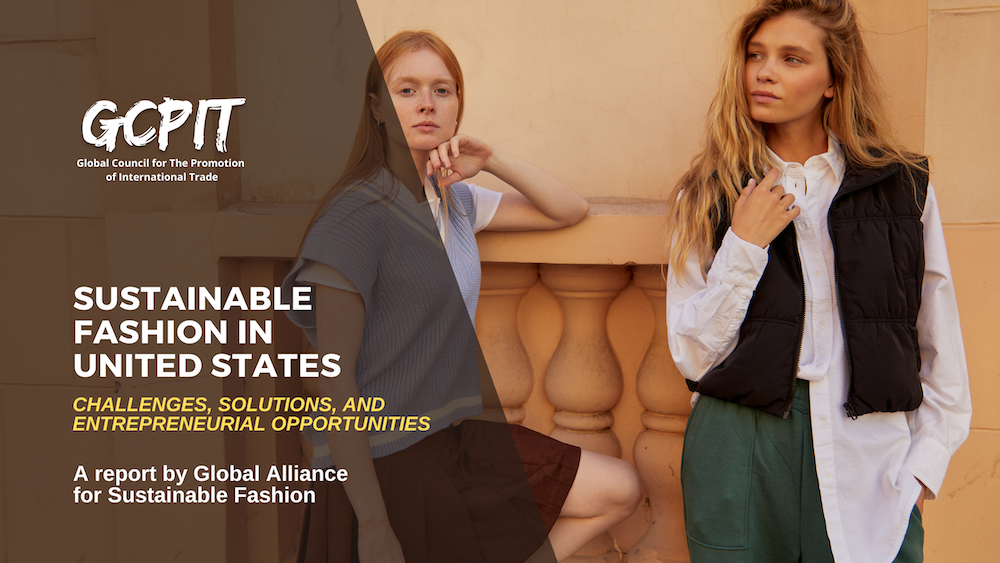Discovering the Increase of Cape Town Sustainable Fashion Brands
Discovering the Increase of Cape Town Sustainable Fashion Brands
Blog Article
Keep Ahead of the Curve by Discovering Cutting-edge Style Fads
In a sector as dynamic as style, staying in advance involves greater than simply following current fads-- it demands an expedition of technology. Smart fabrics, as an example, are transforming garments right into useful masterpieces, while 3D printing is changing layout procedures with its customizable, waste-reducing capabilities. As sustainability ends up being a foundation, advancements like environmentally friendly materials and round fashion techniques are reshaping environmental responsibility - Cape Town Sustainable Fashion. Moreover, the merging of innovation and fashion proclaims a brand-new era of customer engagement. Exactly how, after that, can these arising trends redefine the future of style, and what effects do they hold for brand names seeking to thrive in this advancing landscape?

Embracing Smart Textiles
In recent times, the style sector has actually experienced a transformative shift with the assimilation of clever textiles, a sophisticated technology that mixes innovation with textile. This development represents not only a fusion of appearances and capability however also a significant leap towards sustainability and personalization in style. Smart fabrics, likewise recognized as e-textiles, embed innovative electronics such as sensing units and conductive threads within the material, enabling garments to engage with the atmosphere or the wearer.
These textiles are designed to monitor physical criteria, such as heart rate or body temperature level, giving real-time wellness analytics. Beyond health applications, clever fabrics are likewise being used for flexible clothes, which can alter shade or pattern in feedback to ecological stimulations, thus offering a vibrant style experience.
Moreover, the growth of energy-harvesting textiles that produce power from movement or sunlight is leading the way for self-sufficient wearable modern technology. This technology is interesting ecologically aware customers and designers aiming to minimize the ecological impact of fashion. As research and advancement in this field breakthrough, clever textiles are expected to become significantly common, improving the landscape of modern style with their multifunctional capacities.
The Surge of 3D Printing
Transforming the production landscape, 3D printing has arised as a game-changer in the apparel industry. This innovative innovation has allowed designers to press the limits of creative thinking, producing elaborate and customized garments that were previously unimaginable. By leveraging digital style and additive manufacturing, 3D printing facilitates the production of complex geometries and patterns, permitting designers to try out new textures and frameworks.
A remarkable advantage of 3D printing in vogue is its capacity to generate on-demand, reducing waste and minimizing inventory demands. This effectiveness not just enhances production processes yet likewise enables fast prototyping, enabling developers to bring their visions to life in a shorter timeframe. Furthermore, 3D printing supports modification somewhat unparalleled by standard approaches, using unique layouts and tailored fits customized to private customer choices.
The surge of 3D printing has also equalized fashion, making it easily accessible to emerging designers who can now produce top quality pieces without substantial financial investment in typical manufacturing facilities. As technology continues to development, the garment industry is positioned to harness the full possibility of 3D printing, discovering brand-new materials and methods that will most certainly redefine exactly how style is developed and created.
Sustainable Style Innovations
As the garment industry grapples with journalism need for ecological responsibility, lasting fashion advancements have emerged at the leading edge of transformative modification. The growing recognition of eco-friendly influence has actually see this website fueled a shift in the direction of even more eco-conscious practices and products. Developers and brands are currently prioritizing sustainability, integrating techniques that lessen waste and reduce carbon footprints.
One significant advancement is the surge of round fashion, which stresses recycling and upcycling to extend the lifecycle of garments. This strategy not just lowers waste but also motivates consumers to adopt an extra mindful method to apparel usage. Furthermore, making use of lasting products, such as organic cotton, hemp, and recycled polyester, has obtained traction. These products need less water and energy throughout manufacturing, dramatically decreasing ecological impact.
An additional development depends on the fostering of cutting-edge dyeing strategies that make use of waterless processes or natural dyes, thereby minimizing the huge amounts of water and chemicals generally utilized in textile dyeing. In addition, improvements in biotechnology have caused the development of lab-grown natural leather and fabrics, offering cruelty-free and ecologically pleasant alternatives to standard products. Through these pioneering initiatives, the apparel industry is making purposeful strides towards a more sustainable future.

Tech-Integrated Clothing
Tech-integrated clothing represents an innovative fusion of fashion and technology, reshaping exactly how individuals engage with their clothes. This ingenious domain name is marked by the inclusion of clever fabrics and embedded digital parts, enhancing both performance and aesthetic allure. From physical fitness trackers embedded in sportswear to heated coats regulated by means of smart device apps, tech-integrated apparel offers customers unmatched comfort and versatility.
Introducing brand names are driving this pattern, concentrating on creating garments that respond to ecological stimuli or customer commands. As an example, some garments can alter color or pattern in action to temperature level changes, while others incorporate biometric sensing units to check wellness metrics like heart rate or stress degrees. The smooth integration of innovation into textiles also includes ecological sustainability, with initiatives to establish self-cleaning materials or garments that adjust to weather, hence reducing the requirement for multiple layers.
Furthermore, the advent of wearable technology is not just limited to clothing yet includes accessories like watches and eyeglasses, additional broadening the scope of tech-integrated style. As the market view it now remains to innovate, the possibility for personalization and customization in garments grows, providing consumers one-of-a-kind, tech-enhanced style experiences that satisfy their specific requirements and choices.
Future of Virtual Style
In the last few years, the future of online style has emerged as a transformative force within the sector, leveraging innovations in electronic modern technology to redefine just how style is developed, experienced, and eaten. By incorporating augmented fact (AR), virtual reality (VR), click site and 3D style tools, designers can now craft interactive and immersive experiences that transcend standard style boundaries. Online style enables the creation of garments that exist solely in digital environments, using unlimited opportunities for technology without the restrictions of physical manufacturing.
This digital shift not only presents chances for creative expression but additionally addresses sustainability concerns integral in conventional fashion methods. Cape Town Sustainable Fashion. By eliminating the need for physical resources, online style minimizes waste and decreases carbon footprints. Additionally, the rise of online fashion aligns with the boosting consumer need for customized and unique experiences, as virtual garments can be personalized and tailored to private preferences with ease

Final Thought
The fashion market's future hinge on the integration of sustainable methods and ingenious modern technologies - Cape Town Sustainable Fashion. Smart textiles and tech-integrated clothing are improving capability, while 3D printing uses opportunities for personalization and waste decrease. Lasting style, via environmentally friendly materials and circular strategies, shows a commitment to environmental stewardship. Moreover, virtual fashion is poised to redefine customer interactions. Adjusting to these fads is important for brands looking for to stay affordable and relevant in this rapidly advancing landscape.
In current years, the style industry has actually seen a transformative change with the combination of smart textiles, a cutting-edge development that mixes technology with fabric.As the style industry grapples with the pressing requirement for environmental responsibility, sustainable style developments have arised at the leading edge of transformative modification.In recent years, the future of virtual fashion has emerged as a transformative force within the sector, leveraging innovations in digital technology to redefine just how style is developed, experienced, and taken in. The surge of digital fashion aligns with the boosting consumer demand for special and customized experiences, as digital garments can be personalized and tailored to specific choices with simplicity.
The fashion market's future lies in the integration of lasting practices and innovative modern technologies.
Report this page